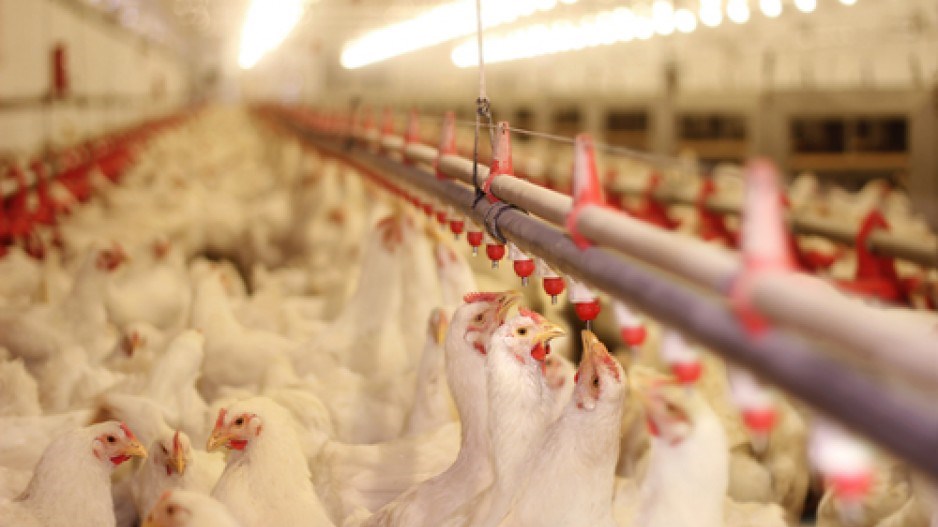The southern half of B.C. has been declared a control zone in an attempt to stop the spread of a virulent avian influenza that has appeared at five Fraser Valley farms and prompted seven countries to restrict B.C. poultry imports.
The Canadian Food Inspection Agency (CFIA) created the zone to identify risk levels and limit chicken and turkey movement.
“Because southern B.C. has a high concentration of poultry operations, the primary control zone covers an area beyond the premises that are currently affected,” the CFIA said in a December 8 release.
Its control zone is bordered on the west by the Pacific Ocean, on the south by the U.S. border, on the north by Highway 16, which goes through Prince George, and on the east by the Alberta border.
The control zone is divided into three smaller zones: infected, restricted and security. The three zones represent different risk levels and movement restrictions.
Most of the restrictions apply to the infected and restricted zones because of the greater potential that the virus can spread, according to the CFIA.
The infected zone is the area within three kilometres from an infected farm. The restricted zone is the area that is between three and 10 kilometres from an infected farm. The security zone is the rest of the area in the control zone.
New movement restrictions apply to captive birds including, but not limited to, poultry, fowl and pet birds. Moving poultry products and by-products are now also restricted. So is moving anything that has been exposed to captive birds, such as feed, vehicles, equipment or clothing. The initiative means some farmers will need permits to move poultry, products and equipment.
The B.C. government fully supports the CFIA’s new control zone restrictions.
“Our first priority is to ensure this highly pathogenic strain of avian influenza is contained and eradicated,” said Agriculture Minister Norm Letnick. “The primary control zone will help us to achieve that.”•




